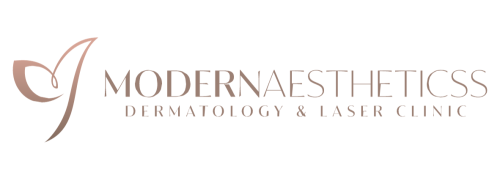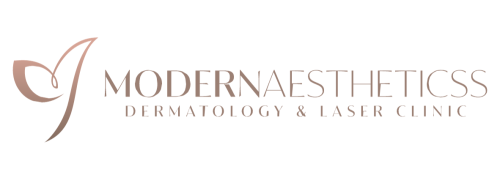Post-Inflammatory Hyperpigmentation (PIH) is a skin issue that appears as dark spots or patches following skin inflammation or injury. This happens because the skin produces extra melanin, the pigment that gives skin its color, as a response to the inflammation. PIH can affect anyone but is more prominent and noticeable in individuals with darker skin tones. Various factors like acne, eczema, burns, or cosmetic treatments like laser procedures can trigger PIH. The discoloration can range from light brown to black and may gradually fade over time, but it can also persist if not addressed properly.
Understanding Post-Inflammatory Hyperpigmentation
Post-inflammatory hyperpigmentation happens when the skin generates too much melanin after experiencing inflammation or injury. With laser hair removal, the heat and light from the procedure can trigger this reaction, resulting in brown spots or darker areas on the skin.
What Causes Post-Inflammatory Hyperpigmentation?
Post-inflammatory hyperpigmentation (PIH) arises when the skin produces an excess amount of melanin, the pigment responsible for skin color, in reaction to inflammation or injury. This excessive melanin production results in dark spots or patches on the skin.
Several factors can contribute to the development of PIH:
- Skin Inflammation: Conditions such as acne, eczema, and allergic reactions cause inflammation that triggers the skin to produce more melanin.
- Injuries: Physical trauma like cuts, burns, or abrasions can lead to increased melanin production as the skin heals.
- Cosmetic Procedures: Treatments such as laser hair removal, chemical peels, and microdermabrasion can sometimes cause inflammation, resulting in PIH.
- Sun Exposure: Ultraviolet (UV) rays from the sun can exacerbate existing hyperpigmentation and create new spots by boosting melanin production.
- Skin Type: People with darker skin tones have more melanin naturally and are more likely to develop PIH.
Knowing these causes can aid in taking preventive steps and seeking suitable treatments for post-inflammatory hyperpigmentation.
What Are the Treatments for Post-Inflammatory Hyperpigmentation?
Here are some of the key professional treatments:
If you are dealing with post-inflammatory hyperpigmentation (PIH), there are several professional treatments available that can effectively reduce dark spots and promote even skin tone. Here are some of the key options:
Chemical Peels
Chemical peels involve the application of a chemical solution to the skin, which exfoliates and removes the outermost layer, helping to reduce pigmentation and encourage new skin growth.
- How it works: The chemical solution causes the top layer of skin to peel off, revealing fresh, new skin beneath.
- Consultation: A dermatologist will assess your skin type and the severity of your hyperpigmentation to determine the appropriate strength and type of peel.
- Aftercare: Post-treatment care is crucial and usually includes avoiding sun exposure and using moisturizers and sunscreens to protect the newly exposed skin.
Microneedling
Microneedling skin treatment uses a device with tiny needles to create controlled micro-injuries in the skin. This process boosts collagen production and improves skin texture.
- How it works: The tiny needles penetrate the skin, promoting the production of collagen and elastin, which helps in repairing and rejuvenating the skin.
- Combination: Microneedling can be enhanced by combining it with other treatments, such as topical serums, for better results.
- Sessions: Typically, multiple sessions are required to achieve optimal results, with noticeable improvements after each treatment.
Laser Treatments
Laser treatments utilize focused light to target and break down pigmentation without harming the surrounding skin.
- How it works: The laser energy targets the melanin in the dark spots, breaking it down so the body can naturally eliminate it.
- Suitability: Different types of lasers are available, and a dermatologist will select the most suitable one based on your skin type and specific pigmentation issues.
- Professional Expertise: It is essential to have laser treatments performed by a qualified professional to avoid potential side effects and ensure the best outcomes.
Each professional treatment has its benefits and considerations. Consulting with a dermatologist in dubai is essential to determine the most appropriate treatment plan tailored to your skin type and the characteristics of your hyperpigmentation.
How Long Does Post-Laser Hyperpigmentation Last?
The duration of post-laser hyperpigmentation varies based on several factors:
- Skin Type and Tone: Darker skin tones tend to experience longer-lasting hyperpigmentation compared to lighter skin tones.
- Laser Settings and Type: The type of laser used and its settings can affect both the likelihood and duration of hyperpigmentation.
- Aftercare: Following proper post-treatment care, such as sun protection and recommended skincare routines, helps minimize hyperpigmentation duration.
- Treatment Approach: Prompt use of suitable treatments like topical creams or additional laser sessions can expedite fading of hyperpigmentation.
- Individual Healing Response: Each person’s skin responds uniquely to laser treatments, influencing the duration of hyperpigmentation.
In general, post-laser hyperpigmentation may persist from several weeks to several months. Consistent care and appropriate treatment typically lead to gradual improvement over time. Consulting with a dermatologist ensures personalized guidance for effectively managing and reducing post-laser hyperpigmentation.
How to Prevent Post-Inflammatory Hyperpigmentation After Laser Hair Removal?
Before your Laser Hair Removal Treatment:
- Patch Test: Always request a patch test to ensure your skin reacts well to the laser.
- Moisturize: Keep your skin hydrated to minimize inflammation.
- Avoid Sun Exposure: Limit exposure to the sun before treatment to decrease the risk of pigmentation.
After your Laser Hair Removal Treatment:
- Cool Compresses: Use cool compresses to soothe the skin and reduce inflammation.
- Avoid Heat: Stay away from hot showers, saunas, and direct sunlight for a few days following treatment.
- Follow-Up: Regularly scheduled appointments with your dermatologist can help manage and monitor your skin’s response to treatment.
Taking these steps can significantly reduce the likelihood of developing post-inflammatory hyperpigmentation after laser hair removal, ensuring smoother and more even skin.
hyperpigmentation acne treatment | hyperpigmentation face treatment | post inflammatory hyperpigmentation | skin hyperpigmentation | post laser hyperpigmentation | hyperpigmentation after laser hair removal | hyperpigmentation after laser


